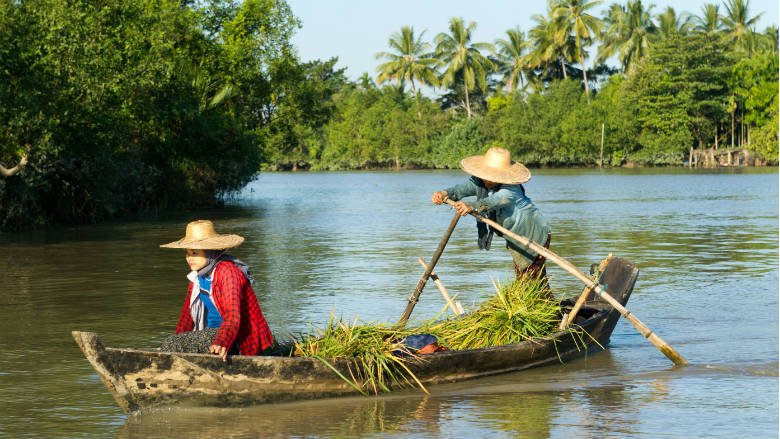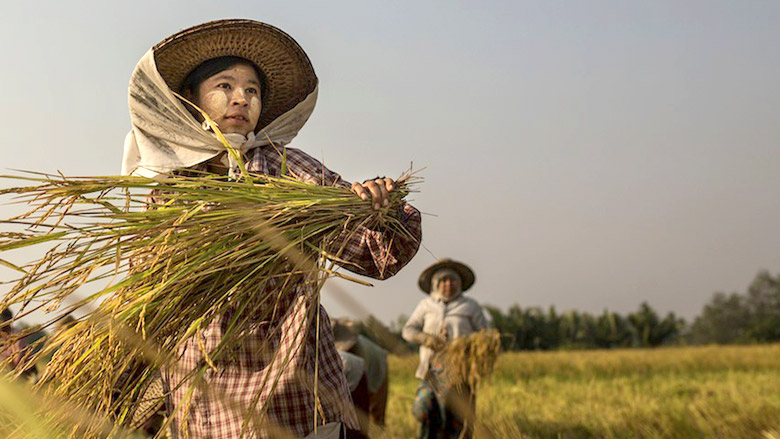Since 2012, Myanmar has seen the beginning of a structural transformation away from agriculture and toward a more urban, industrial, and service-based economy. These patterns have the potential to have a significant impact on the landless and land-poor workers who account for a large part of the rural workforce.
This report, part of the Qualitative Social and Economic Monitoring Series, analyzes domestic migration patterns from Ayeyarwady and Magway, two regions of Myanmar with large numbers of Myanmar’s rural poor, and which are close to two urban centers, Yangon and Mandalay.
The study was conducted in 2015 through a partnership between the World Bank, the Livelihoods and Food Security Trust Fund (LIFT), Myanmar Survey Research, and Indochina Research.
Key Findings
- The Ayeyarwady and Magway Regions have seen high levels of migration in recent years, especially since Myanmar’s economic transition started in 2011.
- One in four households in Ayeyarwady, and one in five in Magway, currently have a family member living as a migrant away from home.
- Migrants are generally young, predominantly male, and better educated than their peers.
- In the Ayeryarwady region, 60% of migrants are men. Women make up one-third of all migrants across both regions.
- 58% of migrants move to Yangon, by far the primary choice for relocation.
- In urban areas, migrants mostly find work in informal labor markets in construction, restaurants and tea shops. A minority enjoy more formal employment in garment factories. Migrants primarily seek jobs through social networks in their villages rather than through paid brokers.
- People in the two regions mostly migrate to create a diverse and potentially more reliable income stream. When making decisions on migration, people move because of differentials in earnings, job availability, working conditions and lifestyles, against constraints of safety, financial and social costs.
- Social networks play a prominent role in influencing decisions about migration. These networks help migrants identify job opportunities before they leave their village, secure accommodation in destination sites, and lower the psychological burden of moving into an unknown environment.
- The study identified three migration types. Those who migrate to manage risks and to find a more predictable income as a response to shocks due to health, injury, crop damage or weather shocks; and among the non-poor for upward mobility as they seek opportunities in Myanmar’s market economy or to access a better formal education in urban centers or overseas. The financial costs associated with migration are mostly low, enabling people to finance migration themselves or with financial support from their families.
- Despite the high rates of migration, the economic impacts are yet to be significant, as most migrants take up low-skilled employment in cities. Remittances are used primarily to supplement food expenses, smooth income and reduce debt.
- In households with a migrant family member, one-third of those left behind are required to take on more responsibilities. This includes responsibilities for daily spending decisions and longer-term decisions about education and health care and increasing contributions towards household labor needs.
- Critical factors affecting migration outcomes include access to information about jobs and human capital endowments like education and vocational skills during the pre-migration stage; access to services and vocational, on-the-job training during the migration period; and integration or reintegration ability determines whether people return to their homes or will set up permanent new ones.

